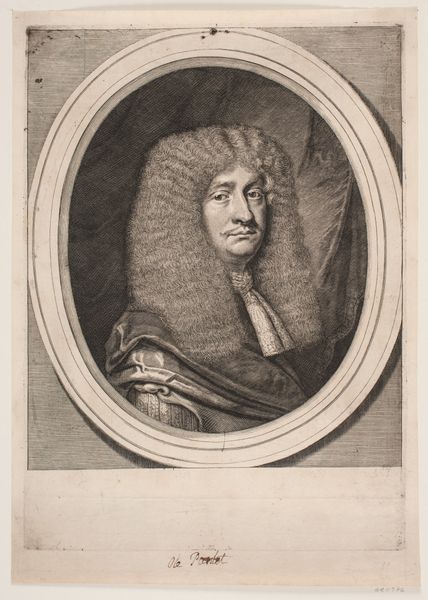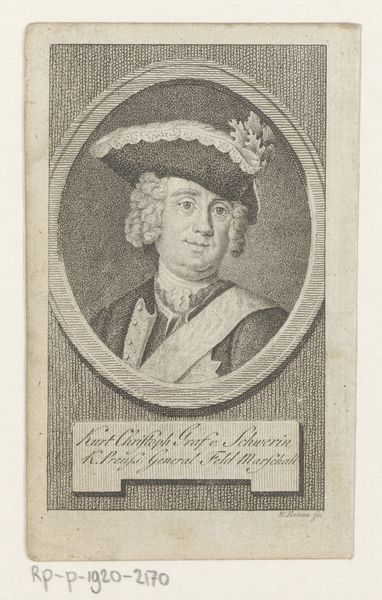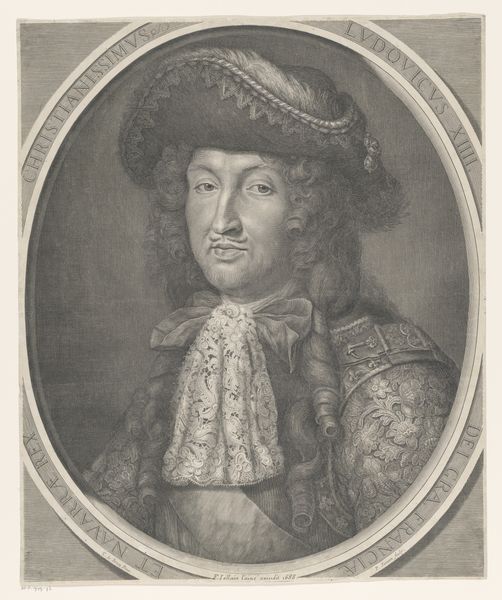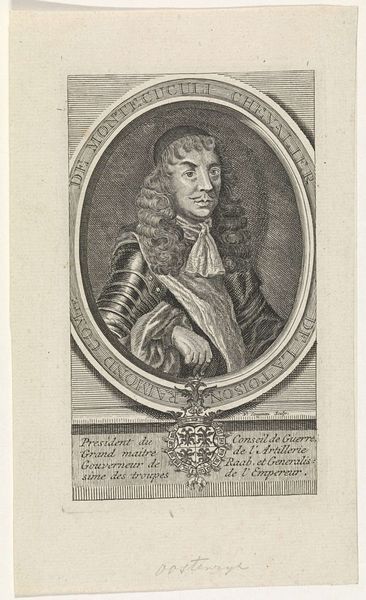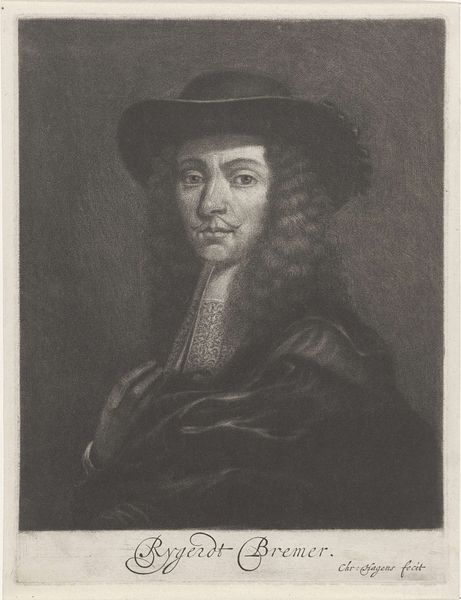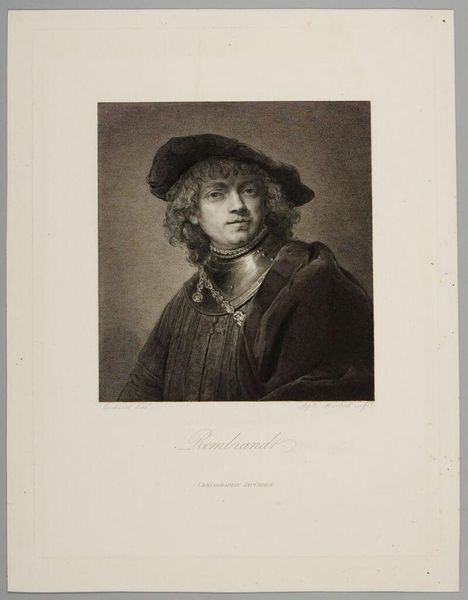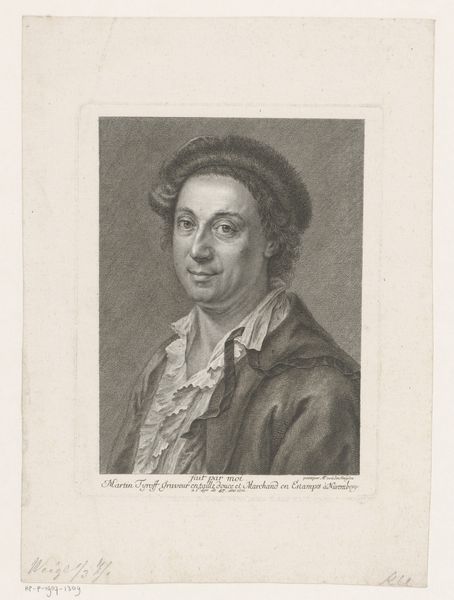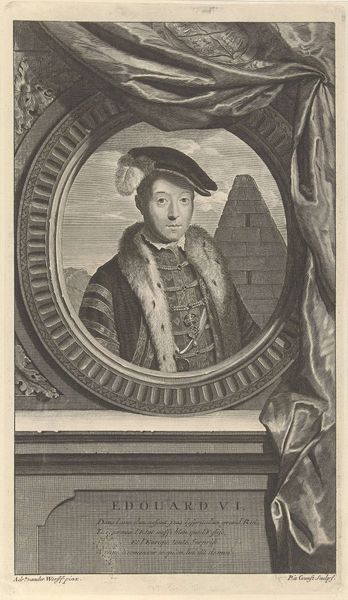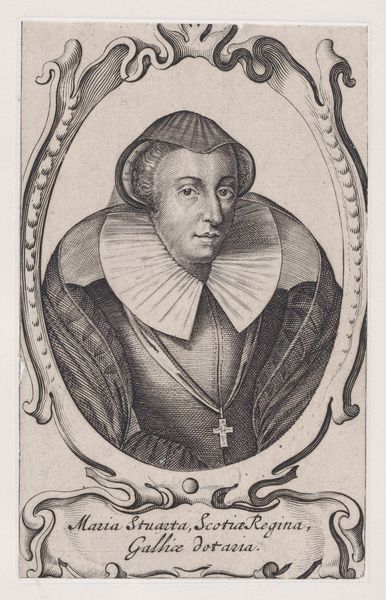
Dimensions: height 140 mm, width 92 mm
Copyright: Rijks Museum: Open Domain
Editor: Here we have François Morellon La Cave's "Portret van Caspar Jacobsz. Philips" from 1766, residing in the Rijksmuseum. It’s an etching and engraving of a man with a rather severe look, framed within a decorative oval. The details in the face and clothing are striking. What stands out to you about this particular portrait? Curator: Well, given the proliferation of portraiture during this period, especially among the burgeoning middle class, I’m particularly drawn to consider the intended audience and the message being conveyed. The use of printmaking—etching and engraving—democratized image production. How does this access, do you think, impact the sitter’s representation and reception? Is it a form of political power? Editor: That's interesting, the idea of access equaling political power! I guess that printmaking allowed for wider circulation, impacting both Philips's and Morellon La Cave's visibility. Does that mean this work challenges the elite's exclusive access to representation? Curator: Exactly! Consider who commissions and consumes these images. A print like this makes the sitter relatable, more aligned with emerging civic identities, compared to grand oil paintings commissioned by the aristocracy. This, in turn, affects artistic status; we must consider whether printmakers were regarded less highly than painters, and why. This print becomes part of a larger social dialogue about class and representation. What does the subject’s direct gaze suggest about that, do you think? Editor: His direct gaze seems like an appeal to connect with the viewer, asserting his presence and perhaps demanding recognition. It’s much more than a simple likeness; it’s a statement. Curator: Precisely. So, what's your takeaway from analyzing it in this way? Editor: I see that this print is more than just a portrait; it's a statement about shifting social dynamics and artistic accessibility, giving a voice, or at least a face, to those seeking recognition beyond the traditional elite. Curator: It really underscores the value of interrogating art within its social and political context. Art always reflects broader cultural currents.
Comments
No comments
Be the first to comment and join the conversation on the ultimate creative platform.


